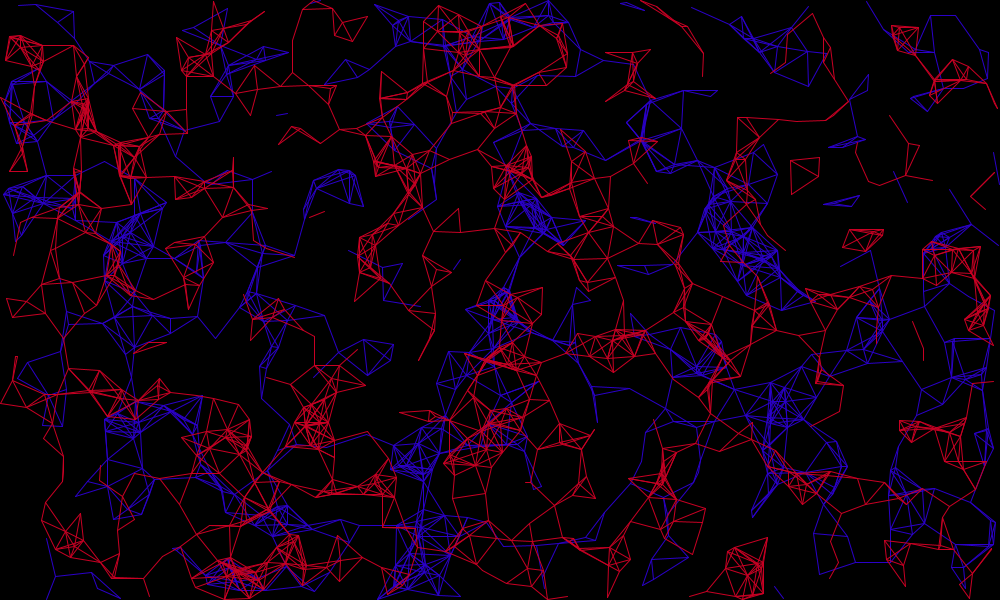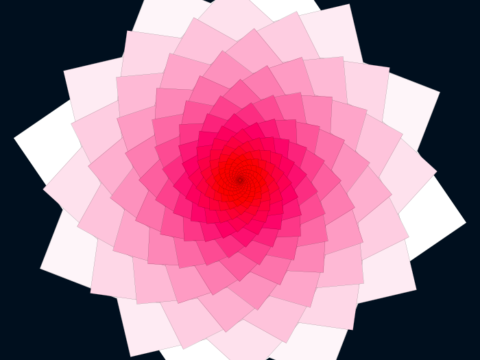DESCRIBE THE OBJECT
This project contains hundreds of points that are randomly placed around the screen that are constantly moving. Every time they get within a certain distance of each other, they connect causing a line to appear in between them. Since there are so many points, hundreds of lines appear making different geometrical shapes. The points are categorized into blue and red points and each produces their respective color lines. These two points also oppose each other meaning that when one set of points/lines grows, the other shrinks. Once the points reach their maximum size or disappear there’s a flash of color that changes the background randomly.
DESCRIBE YOUR MOTIVATION IN CREATING THIS OBJECT
This semester I was interested in creating optical illusions and art that’s geometrical and pattern-based. I started with other spinning optical illusions that didn’t have enough potential to turn into an eco-system until I created these lines that randomly connect which offered more possibilities.
DESCRIBE YOUR PROCESS
Once I was able to get certain points to connect and form lines through collision I decided to make the design more visually appealing and create more interactions with its environment. The lines were initially connected from the start and the only change was that they moved randomly creating different geometric shapes. I played with the length of the distance between the points causing the lines to shrink and grow and eventually added two layers of points so that they coexisted at once giving the project more variety. After shrinking and growing the lines, I wanted to integrate them with the background which is why when they reach their maximum or minimum, there’s a flash of color changing the background until the next rotation.
WHAT DOES THE PROJECT MEAN TO YOU?
This project did exactly what I wanted it to. I wrote the code and gave the computer certain parameters, then let it randomize the rest and place the lines that create shapes however it wanted. It’s not quite an optical illusion but it still is pattern-based and interacts with its ecosystem in its own unique but also controlled way.

